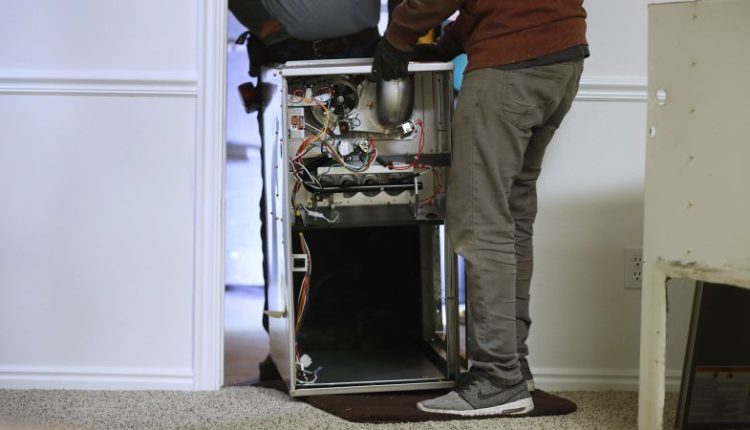Winter expected to be costlier for those who heat with oil. But natural gas heat users will finally get a break.
After several years of skyrocketing winter heating costs, millions of Americans are expected to finally get a little relief this coming season — if they heat their homes with natural gas, that is.
Natural gas heating, which is used by just under half of US homes, is expected to cost an average of $726 this winter, down 7.8% from last year, according to an estimate released Wednesday from the National Energy Assistance Directors Association.
But those using home heating oil will likely get walloped once again. The cost is expected to jump to an average of $2,275, up 8.7% from last year, as oil prices rise due in part to recent decisions by Russia and Saudi Arabia to cut back on petroleum production. Only 4.1% of households use home heating oil, mainly in the Northeast.
“This is the first year many families will get a break,” said Mark Wolfe, the association’s executive director, referring to the projected drop in natural gas heating costs. However, “if you are up in New England, this is scary. It’s going to be another expensive year for families using heating oil.”
Heating with propane is expected to cost an average of $1,538, up 4.2% from last season. Electricity, which is the second most common source of heat, is projected to cost an average of $1,374, up 1.2%.
The federal Energy Information Administration is expected to release its winter heating cost outlook next month.
Americans are gearing up for the winter heating season just as rising gas prices have strained their finances.
Even with the projected drop in natural gas heating costs, families are still shelling out far more than they were in the winter of 2020-2021, when it only cost them $573, on average, for the season, according to the association.
Those using heating oil have seen their costs explode since that winter, when they paid only $1,212, on average. Heating with propane and electricity cost $1,162 and $1,180, on average, respectively, in the winter of 2020-2021.
“For the foreseeable future, home energy is going to be expensive,” Wolfe said. “We are not seeing the prices we saw three or four years ago.”
What’s more, Congress is not expected to continue providing the significant funding boosts for the Low Income Home Energy Assistance Program that it has in recent years, Wolfe said.
Both the House and Senate, which have yet to agree to funding the federal government for the coming fiscal year, have proposed allocating about $4 billion for the safety net program. But lawmakers had provided $6 billion this year and about $8.4 billion in the prior fiscal year to help Americans contend with rising energy prices.
The reduction could mean that 1 million fewer families will be served, said Wolfe, who is concerned the allocation could be slashed even further.
And it would come at a time when applications for LIHEAP assistance have risen for both heating and cooling assistance.
“Part of the problem is that we are under pressure to run year-round programs because of summer, and there’s not enough money,” Wolfe said.
If the federal LIHEAP budget is reduced, the Alliance for Community Empowerment — which distributes assistance to Connecticut residents — may be forced to turn away people in need, said Monette Ferguson, the nonprofit’s executive director.
“The budget being cut not only will leave our clients having to make hard sacrifices, but it also can lead to children being without heat,” said Ferguson. “Utility costs have doubled, and clients should not have to choose if they are going to provide heat or food for their families.”
Read the full article here

